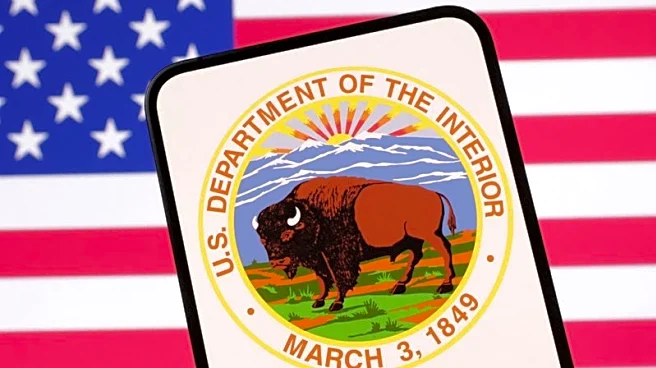What's Happening?
The US Geological Survey (USGS) has proposed significant changes to the critical minerals list, adding copper, potash, and silicon. This marks the most substantial revision since the list's inception in 2018. The updated list now includes 54 minerals, with six new additions and two removals. The inclusion of copper and silicon is driven by the severe economic consequences of potential supply disruptions. Potash was added due to risks from trade barriers, particularly from Canada. Silver was included to mitigate potential disruptions involving Mexico. Conversely, tellurium was removed as the US shifted from a net importer to exporter, and arsenic was dropped due to revised data showing Peru as the leading producer. The draft list categorizes minerals into three risk tiers: high, elevated, and moderate, evaluating economic fallout from supply shocks.
Why It's Important?
The revision of the critical minerals list reflects evolving market conditions and new data, reshaping federal views on mineral criticality. The inclusion of copper, potash, and silicon highlights their importance in mitigating economic risks associated with supply disruptions. This move is crucial for industries reliant on these minerals, as it aims to address supply chain vulnerabilities. The categorization into risk tiers provides a framework for policymakers to prioritize resources and strategies to ensure stable supply chains. The changes could impact trade policies and domestic production strategies, influencing economic stakeholders across various sectors.
What's Next?
The final list will be published after a 30-day public comment period, allowing stakeholders to provide input on the proposed changes. This period will be crucial for industries and policymakers to assess the implications of the new additions and removals. The USGS's methodology will continue to guide future assessments, potentially leading to further revisions as market conditions evolve. Stakeholders may need to adjust their strategies to align with the new risk tiers and address identified supply chain vulnerabilities.












